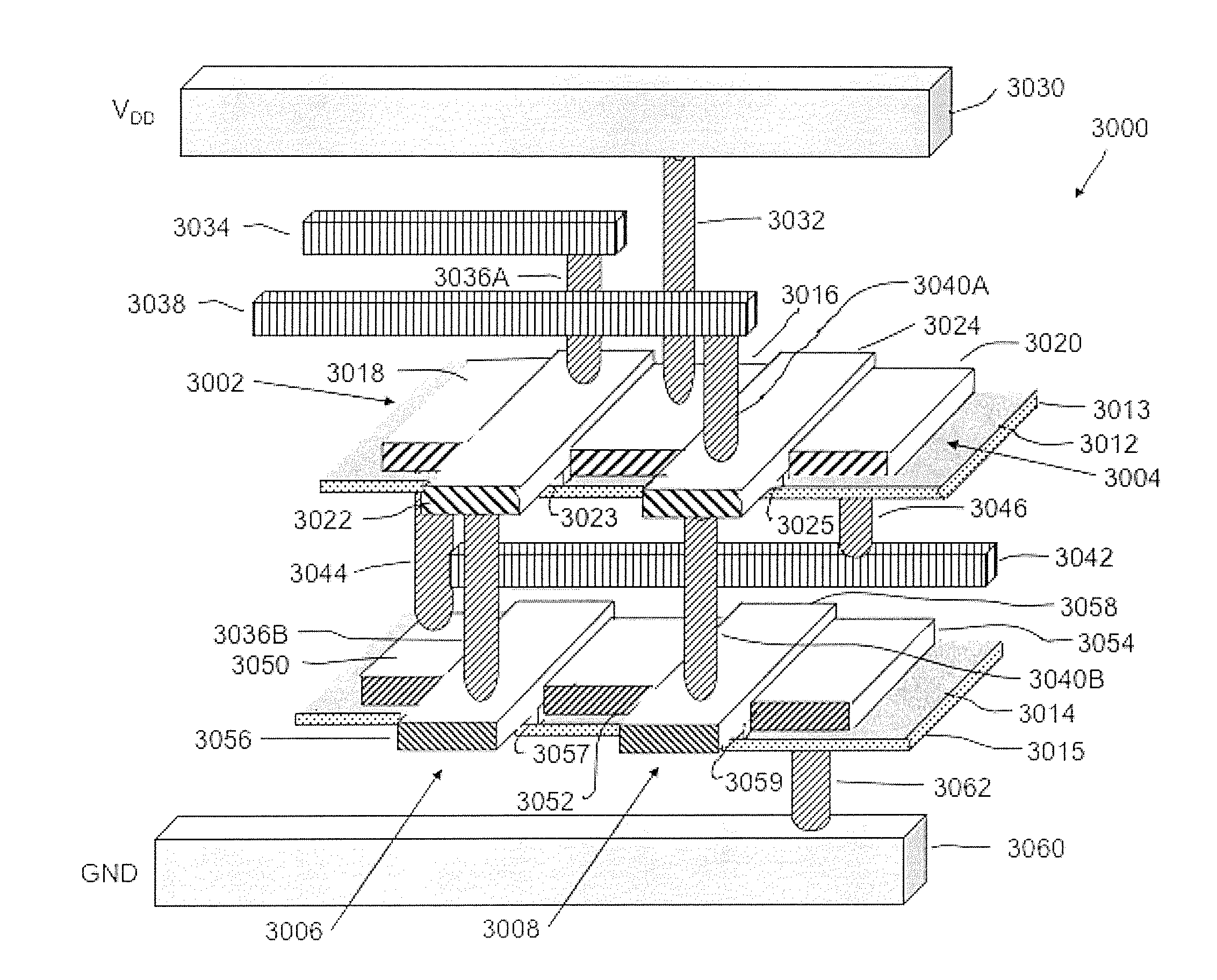Logic Elements Comprising Carbon Nanotube Field Effect Transistor (CNTFET) Devices and Methods of Making Same
a technology of field effect transistor and logic elements, which is applied in the direction of logic circuits characterised by logic functions, cad circuit design, and nano-informatics, etc., can solve the problems of high standby power dissipation at short channel lengths, and body effect can negatively impact the performance of cmos inverters
- Summary
- Abstract
- Description
- Claims
- Application Information
AI Technical Summary
Benefits of technology
Problems solved by technology
Method used
Image
Examples
Embodiment Construction
[0096]The present disclosure is directed toward NOT gates (or inverter circuits) and NAND circuits (or gates) fabricated using nanotube fabrics to replace semiconductor substrates. The NOT gates and NAND circuits can be constructed using carbon nanotube field-effect transistors (CNTFET) having nanotube fabrics as sources, drains, and channel regions. The nanotube fabric in each CNTFET is made of semiconducting carbon nanotubes to form either p-type, n-type, or ambipolar-type CNTFET devices. Therefore, parasitic components present in a MOSFET between p-type regions and n-type regions and the underlying semiconductor substrates are not present in CNTFETs. This is because the source, drain, and channel regions are formed in nanotube fabrics on insulating substrates, which replace semiconductor substrates and eliminates depletion region capacitances. Also, threshold modulation effects (body effects) of devices in series associated with semiconductor substrates, such as in NAND circuits ...
PUM
 Login to View More
Login to View More Abstract
Description
Claims
Application Information
 Login to View More
Login to View More - R&D
- Intellectual Property
- Life Sciences
- Materials
- Tech Scout
- Unparalleled Data Quality
- Higher Quality Content
- 60% Fewer Hallucinations
Browse by: Latest US Patents, China's latest patents, Technical Efficacy Thesaurus, Application Domain, Technology Topic, Popular Technical Reports.
© 2025 PatSnap. All rights reserved.Legal|Privacy policy|Modern Slavery Act Transparency Statement|Sitemap|About US| Contact US: help@patsnap.com



